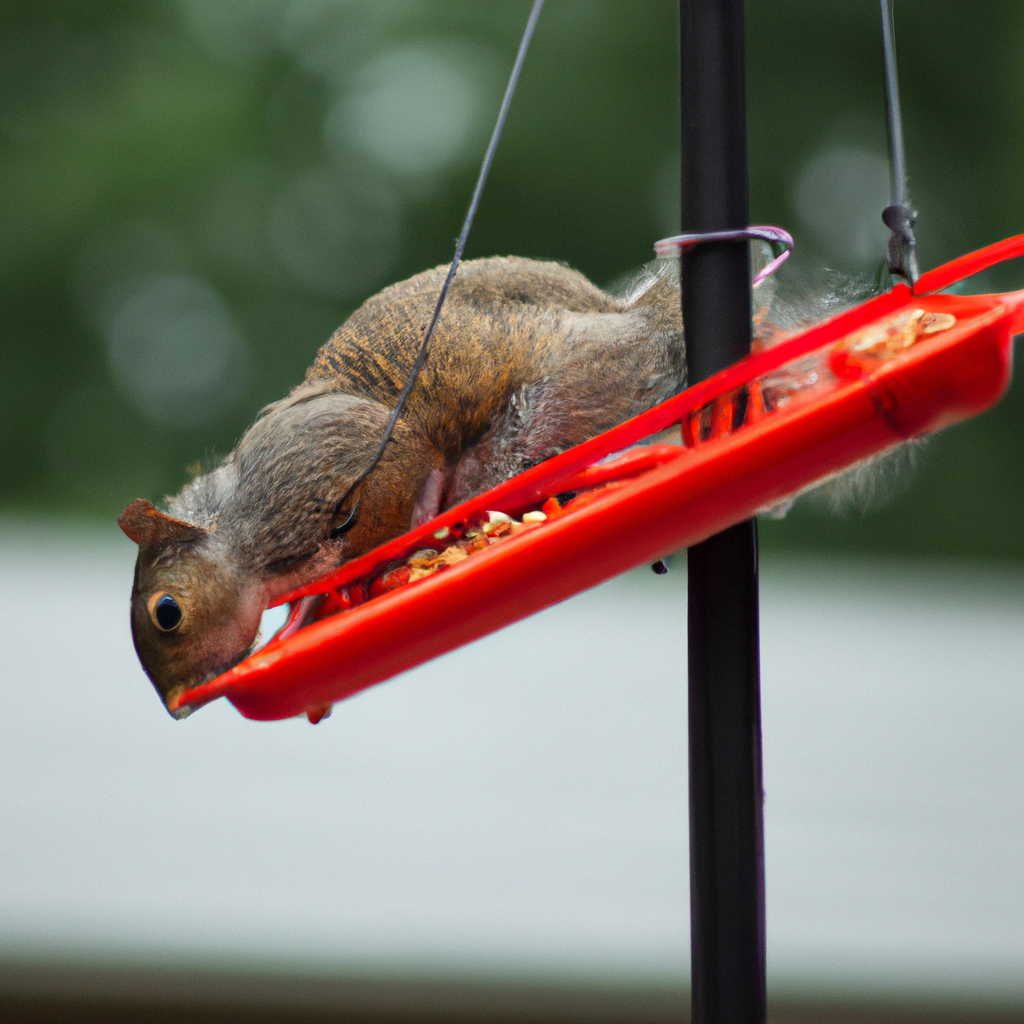Survival Time for Incubated Eggs Without Heat Explained
You’re on the edge of your seat, watching and waiting for your incubated eggs to hatch. But what if the power goes out, or your incubator malfunctions? Suddenly, you’re faced with a critical question: how long can those eggs survive without heat? Don’t worry; we’ve got the answers you need.
Understanding the delicate balance of temperature and time is key to successful hatching. In this article, you’ll discover the surprising resilience of incubated eggs and learn just how long they can withstand cooler conditions. Stick around to unlock the secrets to keeping your hatchlings safe, even when the heat is off.
The Importance of Temperature in Incubation
Maintaining the right temperature is critical when you’re incubating eggs. Just as a mother hen naturally provides warmth, your incubator should consistently hold an ideal temperature to support the development of the embryos inside. It’s not unlike setting the perfect conditions for seeds to sprout; too hot or too cold, and the seed won’t germinate properly.
Research shows that the optimal temperature range for chicken egg incubation is 99 to 102 degrees Fahrenheit. Straying outside this range—even briefly—can result in developmental issues or failed hatching. Think of the embryo as a complex machine that’s programmed to operate at a certain temperature; deviating from the norm causes malfunctions.
Here’s what you need to know about how temperature variations affect the incubation process:
- Lower temperatures slow down embryonic growth, and if it’s too cold, development may stop altogether.
- Higher temperatures can speed up development, but also increase the risk of birth defects or early hatching, which comes with its own set of risks.
To keep your incubation on track, invest in a reliable incubator with a stable thermostat. Products like the Magicfly Digital Mini Fully Automatic Egg Incubator are popular among breeders because of their consistent heat distribution and ease of monitoring.
Temperature consistency is crucial, especially in the early stages of incubation. The first week is when the fundamentals of the embryo’s body are being formed. It’s during this delicate period that fluctuations in temperature can be the most detrimental.
Monitoring temperature doesn’t just mean checking the digital display. You’ll want to ensure the incubator is in a room without drafts and where the room temperature is stable. Sudden changes in the room’s environment can affect the incubator’s internal temperature, even with the best insulation technology.
Remember, patience and careful attention to temperature will set the stage for a successful hatch. Keep an eye on both the incubator’s settings and the surrounding environment to ensure your eggs have the heat they need.
Factors Affecting Egg Survival Without Heat
When you’re incubating eggs, understanding what influences their survival without heat can help manage any unexpected temperature drops. Ambient temperature fluctuations play a critical role. If your incubator experiences a power outage, the room temperature can determine how quickly the inside temperature drops. Ideally, the room should be at a steady temperature, not subject to sudden changes.
The stage of embryo development is also pivotal. Earlier stages are more vulnerable to temperature disruptions with the potential to cause developmental delays or stop growth altogether. Conversely, eggs closer to hatching can sometimes withstand brief periods of lowered temperatures a bit better.
Consider the type of incubator you’re using. High-tech models with good insulation retain heat longer compared to basic ones. Investing in an incubator with superior heat retention properties can provide an extra buffer during power outages.
Don’t overlook the humidity level in the incubator. If the air is too dry, the embryos may lose moisture too quickly when the heat is off, which can be detrimental. Maintain the recommended humidity levels to ensure the resilience of the eggs under less than ideal conditions.
The duration of the temperature drop is, of course, a vital factor. Short-term drops of a few degrees might not be catastrophic, but prolonged exposure to cold will likely endanger the eggs. Swift action to restore the proper temperature is necessary to minimize risks.
Bear in mind the egg’s position and how often you turn them. Eggs that are uniformly warmed and regularly turned might have a slight edge in enduring a drop in temperature better than those left in one position.
By preemptively identifying these key factors and preparing for them, you’re equipping yourself to handle potential heat loss scenarios and safeguard the eggs’ viability until the warmth is restored. Keep a close eye on your incubation setup and always be ready to take corrective measures should the temperature fall outside the optimal range.
Resilience of Incubated Eggs
When you’re dealing with the fragility of incubated eggs, it’s vital to know just how resilient they can be in the absence of a consistent heat source. Despite being sensitive to temperature changes, eggs do have a modest threshold allowing them to survive without heat for short periods.
Eggs can withstand a surprising dose of adversity, particularly when the environment they’re kept in doesn’t swing to extremes. The resilience of an egg largely hinges on the embryo’s stage of development. During the early stages, embryos are less developed and can be more susceptible to temperature drops. As development progresses, they gain a bit more leeway.
Here’s what you should consider to ensure your incubated eggs remain viable:
- Room Temperature Stability: Keeping the room where the incubator is placed at a stable temperature helps buffer any accidental heat losses.
- Insulation Quality of Incubator: A well-insulated incubator retains heat for longer, offering a safeguard during power outages or equipment failure.
- Quick Recovery: Ensuring your incubation set-up can quickly return to the optimal temperature range is critical for maintaining egg viability.
If temperatures within the incubator drop, the period that eggs can survive is contingent upon how low the temperature drops and for how long it remains there. For example:
| Temperature Drop | Duration Before Risking Viability |
|---|---|
| Moderate (95°F) | Several Hours |
| Significant (<95°F) | 1-2 Hours |
Remember to act swiftly to restore heat to mitigate any potential harm. By understanding the resilience of incubated eggs and preparing for these eventualities carefully, you’re setting yourself up for the best chances of a successful hatch. The right incubator can make all the difference — models like the Brinsea Mini Advance and the Hova-Bator Genesis are popular amongst hobbyists for their reliable temperature control and durability.
How Long Can Incubated Eggs Go Without Heat?
When you’re hatching chicks, it’s crucial to keep an eye on the incubator’s heat source. But what happens if there’s a power outage or the equipment malfunctions? You’d be surprised to find out that incubated eggs possess a degree of resilience. Eggs have the ability to survive a period of cool temperatures before and after the embryo begins developing.
The key factor in determining how long eggs can go without heat is the stage of incubation. During the early stages, up to the first week, eggs need consistent warmth to kickstart the development process. If the temperature drops, the survival window can be as short as a few hours. However, if you’re past this critical phase, the window expands.
- Day 1 to 7: Survival time without heat ranges from 2 to 6 hours.
- Day 7 to 14: Eggs may last up to 8 hours without a heat source.
- Day 14 to hatching: The embryo has developed enough thermal mass to remain viable for around 10-12 hours in reduced temperatures, but not lower than 70 degrees Fahrenheit.
It’s essential to get that heat back up as swiftly as possible. When returning to normal temperature, raise it gradually to prevent shocking the embryos. A sudden change can be just as disastrous as an extended period without heat.
For peace of mind, consider incubators like the Brinsea Mini Advance Hatching Egg Incubator or the Magicfly Digital Mini Fully Automatic Egg Incubator. These models are known for their reliable thermostats and have backup power options available, ensuring a stable environment throughout the incubation process.
In cases of emergency, be prepared with a plan. Insulating the incubator with blankets or moving it to a warmer room can help maintain a steady temperature temporarily. Remember to regularly track the temp and manage the situation promptly to keep your hatch on track.
Tips for Keeping Hatchlings Safe in Cooler Conditions
When incubating eggs face sudden drops in temperature, you’ve got to think on your feet to protect your future hatchlings. Remember, eggs are more resilient as the embryos mature. However, you can’t just rely on this natural robustness; you’ll need to be proactive.
Firstly, monitor humidity levels alongside temperature. A hygrometer will become your best friend in ensuring conditions remain optimal for embryonic development. The right humidity prevents the eggs from losing too much water and shrinking the air cell inside, which is critical for the chick’s growth.
You’ve also got to shore up your incubation setup. Investing in a high-quality incubator with a proven track record for temperature stability is a smart move. Look for products with rave reviews from other poultry enthusiasts. A couple of favorites include the Brinsea Mini Advance Hatching Egg Incubator and the Magicfly Digital Mini Fully Automatic Egg Incubator – both known for their reliability.
Suppose your power fails; having a backup plan is vital. A battery power source or generator can kick in to avoid temperature disruptions. Always test your backup system regularly to ensure it’s ready to go when needed.
In some circumstances, you might need to provide an additional heat source. A heat lamp or even a water bottle filled with warm water placed near the incubator can help maintain a cozy environment. Just make sure anything you implement is safe and doesn’t pose a fire hazard.
Lastly, let’s talk about manual turning of eggs. If your incubator lacks an automatic turning feature, you’ll need to do it by hand. Ensure this is done carefully and at the right intervals to mimic the mother hen’s natural movement, which helps the chick develop appropriately and prevents sticking to the shell.
| Maintenance Task | Frequency |
|---|---|
| Monitor humidity levels | Multiple times daily |
| Test backup power source | Monthly |
| Manual turning of eggs | At least thrice daily |
Your vigilance in maintaining a stable incubation environment can significantly improve the chances of a successful hatch. Keep these tips in mind and always be prepared for the unexpected drop in temperature.
Conclusion
Keeping your incubated eggs safe from temperature fluctuations is critical to ensuring a successful hatch. You’ve learned that the survival of your eggs without heat varies depending on the stage of development, and that a stable incubation environment is key. Remember to be prepared for emergencies by insulating your incubator or having a backup heat source ready. By following these guidelines and investing in the right equipment, you’ll give your hatchlings the best possible start. Stay vigilant and proactive about temperature control and you’ll be well on your way to a thriving brood.




